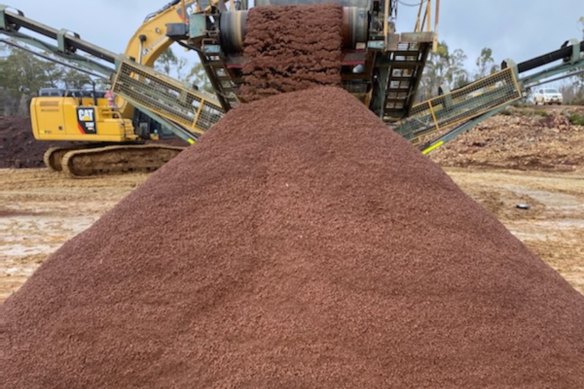
It is also worth noting that Treasury traditionally employs very conservative estimates of the future iron ore prices.
The latest slump appears to be in response to a disturbing statement from China’s biggest steelmaker, Baowu, which eerily predicted the downturn in the steelmaking industry would be “longer, colder and more difficult to endure than we expected”.
It’s the deflating property bubble in China that is focusing Treasury’s attention, as the rivers of gold flowing from the taxation of iron ore miners have a huge impact on the government’s coffers.
Baowu chairman Hu Wangming, who made the comments at the company’s half-year meeting, said the challenge could be worse than the “major traumas” of 2008 and 2015. At the end of 2015, iron ore prices traded below $US40 a tonne.
The iron ore price has now fallen 38 per cent this calendar year and is sitting just north of $US97 a tonne.
The concern about the iron ore price has clearly fed into the share prices of our big producers. BHP shares have fallen more than 21 per cent this year, Rio Tinto’s stock has deteriorated by almost 20 per cent and Fortescue’s shares have lost 42 per cent of their value. Brazilian producer Vale is down 35 per cent.
That’s a cumulative wipeout of around $US100 billion ($150 billion).

Iron ore is vital to the Australian economy.
The miners saw some of the fall in iron ore prices over the past year reflected in their results for the year to June, but since then, the reduction in pricing has been steeper.
The miners historically have counted on the Chinese government to introduce large-scale stimulus packages to kick-start growth in China’s economy and its housing market, but such measures have been quite muted to date.
Loading
China posted weaker-than-expected growth in the June quarter of 2024, with real GDP rising by 0.7 per cent to be 4.7 per cent higher through the year. Home prices posted their sharpest fall on record to be 8.2 per cent lower through the year in July. In the 12 months to July, residential construction starts are down about 60 per cent on their peak in 2021.
Conventional wisdom says there is a floor to be found in the iron ore prices when the more marginal producers mothball operations as their costs outweigh the price.
But if demand continues to dry up rapidly, that floor may be lower than it has been in the past.









 Add Category
Add Category